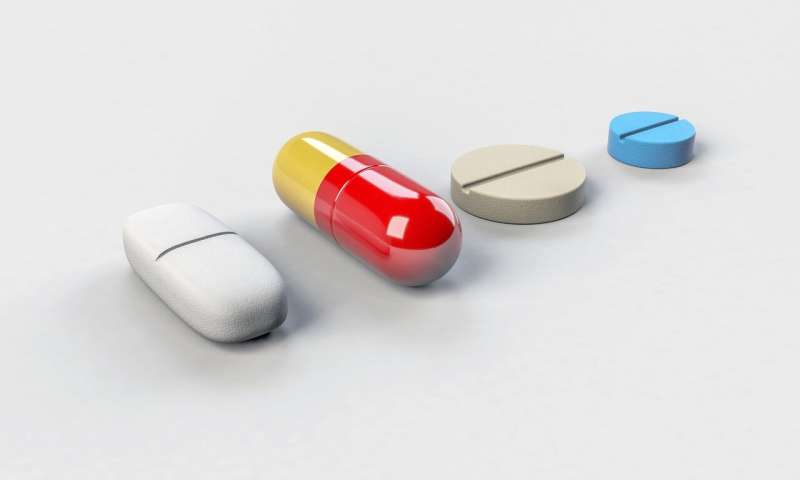
A team of Chinese scientists has recently developed two novel compounds that inhibit the SARS-CoV-2 main protease (Mpro) and one of them is a good drug candidate for further clinical studies.
The research, published online in Science on April 22, was conducted by Prof. Liu Hong and Prof. Xu Yechun from the Shanghai Institute of Materia Medica (SIMM) of the Chinese Academy of Sciences (CAS), Prof. Yang Haitao from the Shanghai Institute for Advanced Immunochemical Studies of ShanghaiTech University, Prof. Zhang Lei-Ke from the Wuhan Institute of Virology of CAS, and their collaborators.
As of April 22, more than 2.5 million cases of COVID-19 have been confirmed, with more than 170 thousand deaths. No clinically effective vaccines or specific antiviral drugs are currently available for the prevention and treatment of COVID-19.
SARS-CoV-2—the etiological agent responsible for the global COVID-19 outbreak—is an enveloped, positive-sense, single-stranded RNA virus and SARS-CoV-2 Mpro plays a vital role in its life cycle. Since SARS-CoV-2 Mpro has no human homologue, it is an ideal antiviral drug target.
After analyzing the substrate-binding pockets of SARS-CoV-2 Mpro, the scientists designed and synthesized two compounds, 11a and 11b. A fluorescence resonance energy transfer (FRET)-based cleavage assay was then used to determine their IC50 values. The results revealed excellent SARS-CoV-2 Mproinhibitory activity for both 11a and 11b, with IC50 values of 0.053 ± 0.005 μM and 0.040 ± 0.002 μM, respectively.
The researchers also employed immunofluorescence, quantitative real-time PCR and plaque assay to monitor the antiviral activity of 11a and 11b. The results all showed that compounds 11a and 11b exhibited good anti-SARS-CoV-2-infection activity in cell culture (e.g., EC50 values were 0.53 ± 0.01 μM and 0.72 ± 0.09 μM, respectively, when using the plaque assay). In addition, these compounds showed good PK properties in vivo, suggesting they are promising drug candidates. However, the lower toxicity of compound 11a makes it particularly promising.
In order to elucidate the inhibition mechanism of SARS-CoV-2 Mpro in compounds 11a and 11b, the scientists determined the high-resolution crystal structure of complexes Mpro-11a (PDB: 6LZE) and Mpro-11b (PDB: 6M0K) at 1.5-A resolution. The high-resolution crystal structure of these complexes not only demonstrated SARS-CoV-2 Mpro-11a/11b interactions, but also revealed the mechanism of SARS-CoV-2 inhibition. High-resolution analysis of complexes is useful to medicinal chemists in designing novel inhibitors that act against SARS-CoV-2.
This study shows that structure-based drug design is an effective strategy for designing specific antiviral leads against SARS-CoV-2. Preclinical research on compound 11a is now proceeding. The team has decided to share its research data with scientists around the world to accelerate the development of anti-SARS-CoV-2 drugs.
Source: Read Full Article